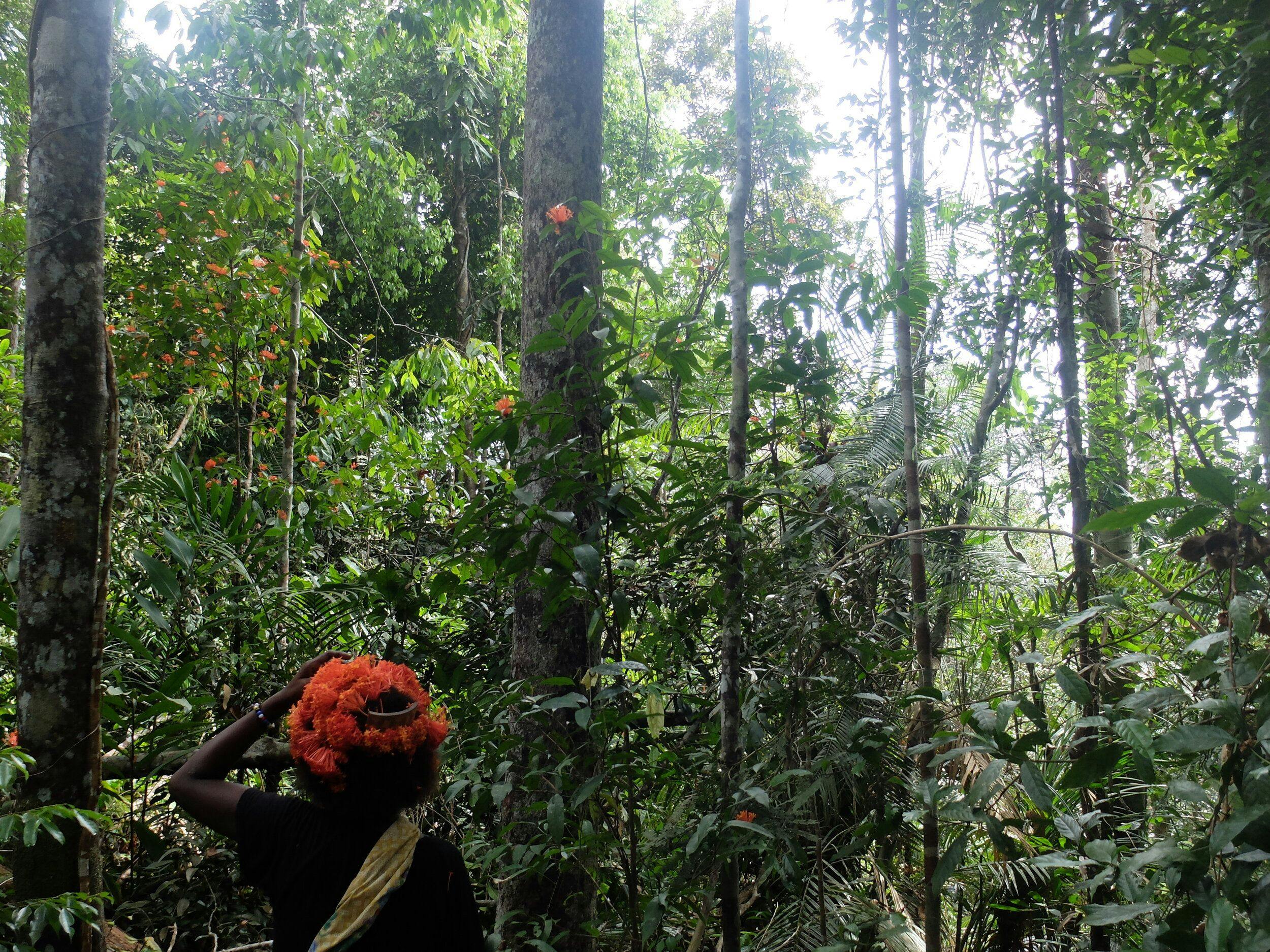Placating the thunder-being with the smells of plants
For the Batek, a lowland rainforest-dwelling hunting and gathering group of Peninsular Malaysia, plants are necessary to everyday life. They are also greatly loved for their beauty and smells, are understood to be sentient, and to have unique kinds of personhood.
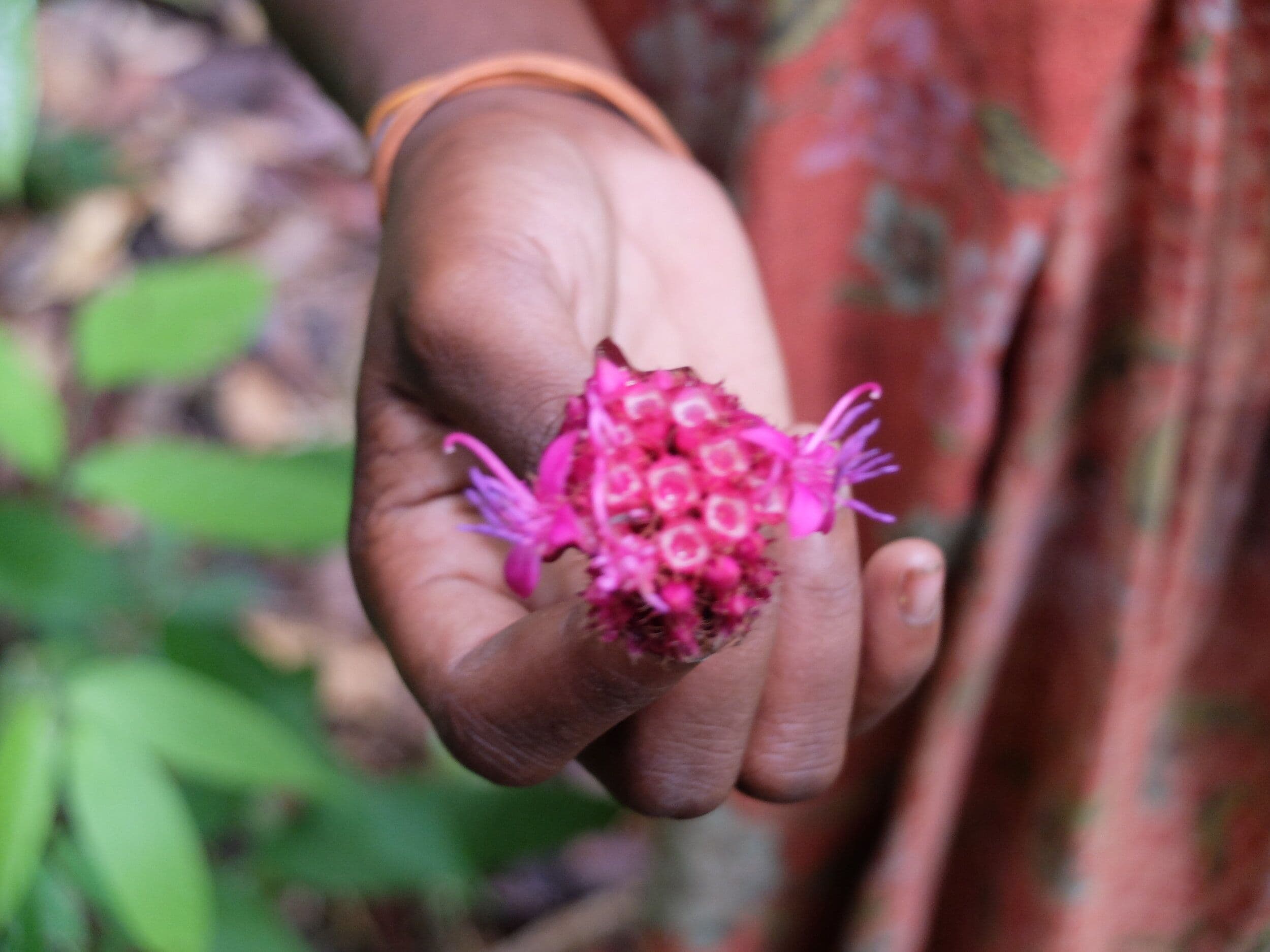
On one fishing trip that took place during my eighteen months of fieldwork with the Batek, there had been a lot of laughter. As we traipsed back to the camp, the sky darkened and the air became very close, indicating that a storm was coming. Naʔ Srimjam speculated whether the reason for this storm was perhaps that Gubar (the 'thunder-being') was angry because we had been laughing too much—laughter is taboo in the Batek's forest.
To pacify Gubar, Naʔ Srimjam collected various leaves that had a particular mahũŋ smell (a smell term that encompasses certain kinds of fresh leaf, freshly cut wood, pandanus, and tea).1 By burning these leaves when we got back, the idea was to make a strong mahũŋ smell so as to cause Gubar to feel haʔip ('love, longing, yearning, nostalgia')2 for the old days, instead of feeling angry at their mistake. He would remember, in Naʔ Srimjam's words, that the Batek are 'good people really'.
As this story demonstrates, humans get things wrong and act in ways that are offensive to other kinds of person. In this case, it was the powerful emotions caused by the sensory properties of a particular plant that remedied the situation.
Thinking through how Batek people navigate their own sensory preferences alongside those of plants (and other entities such as Gubar), demonstrates that the ways sights, smells, and sounds circulate are extremely complex. Relationships, and safety from storms and hunger, rely on getting this right.
At the same time, part of dwelling in this diverse forest is the expectation of difference, and the knowledge that you don’t always have the same preferences. These differences are all part of what it means for people and plants—and their other companions—to dwell together.
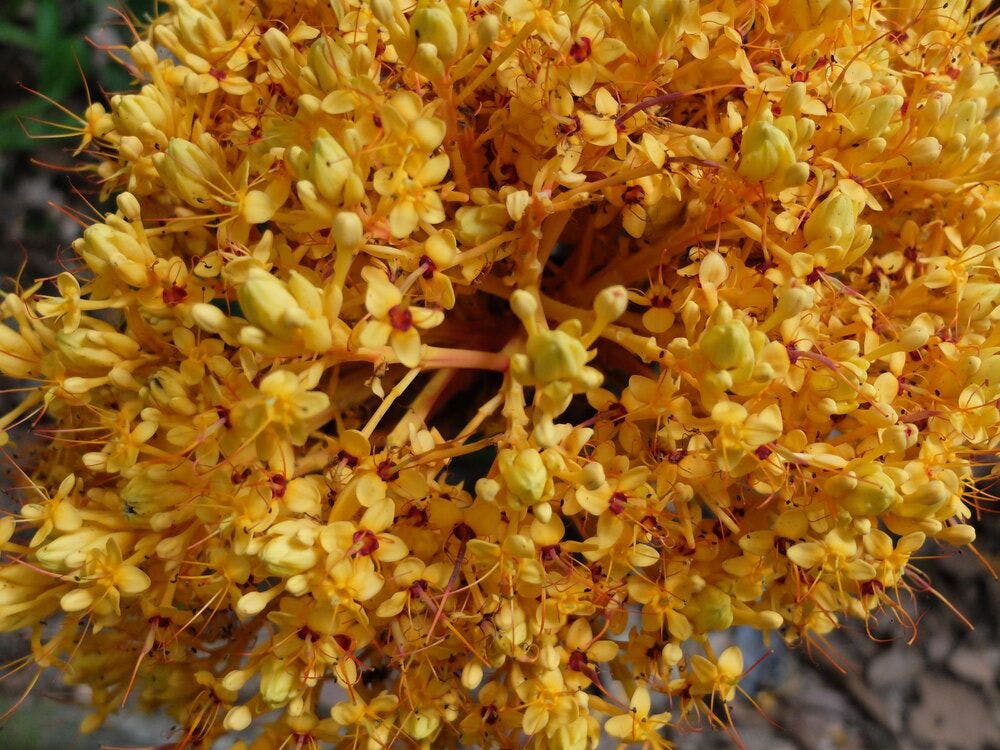
Reflecting the diversity of human-plant relations, the abstract, general category of 'plant' isn't one that the Batek use. Indeed, many such large-scale linguistic abstractions are absent in Batek (there is no meaningful way of talking generally about 'animals', or 'weather' either).
When discussing plants, people instead use their specific name, or various more particular classifiers. These might be haliʔ ('leaf'), kayuʔ ('tree'), bataŋ ('branch'), pucɔk ('shoot'), jeʔes ('roots'), or kbəʔ ('fruit'). Or, people might call plants by what they are to be used for, for example ʔayam ('fragrant leaves for bodily decoration'), tnmpot ('fragrant leaves or flowers to be tucked into comb'), cnaduk ('flower or leaf to be tucked into hair'), bap ('starchy food'), plɔʔ ('edible fruit'), or taʔah ('edible vegetation'). Most often, people use both the specific name and the purpose or type, for example bap yɛʔ cawas ('my starchy cawas [a type of Artocarpus]food'), or bataŋ tkɛl ('a branch of tkɛl' [a type of tree whose bark is used for flooring]).
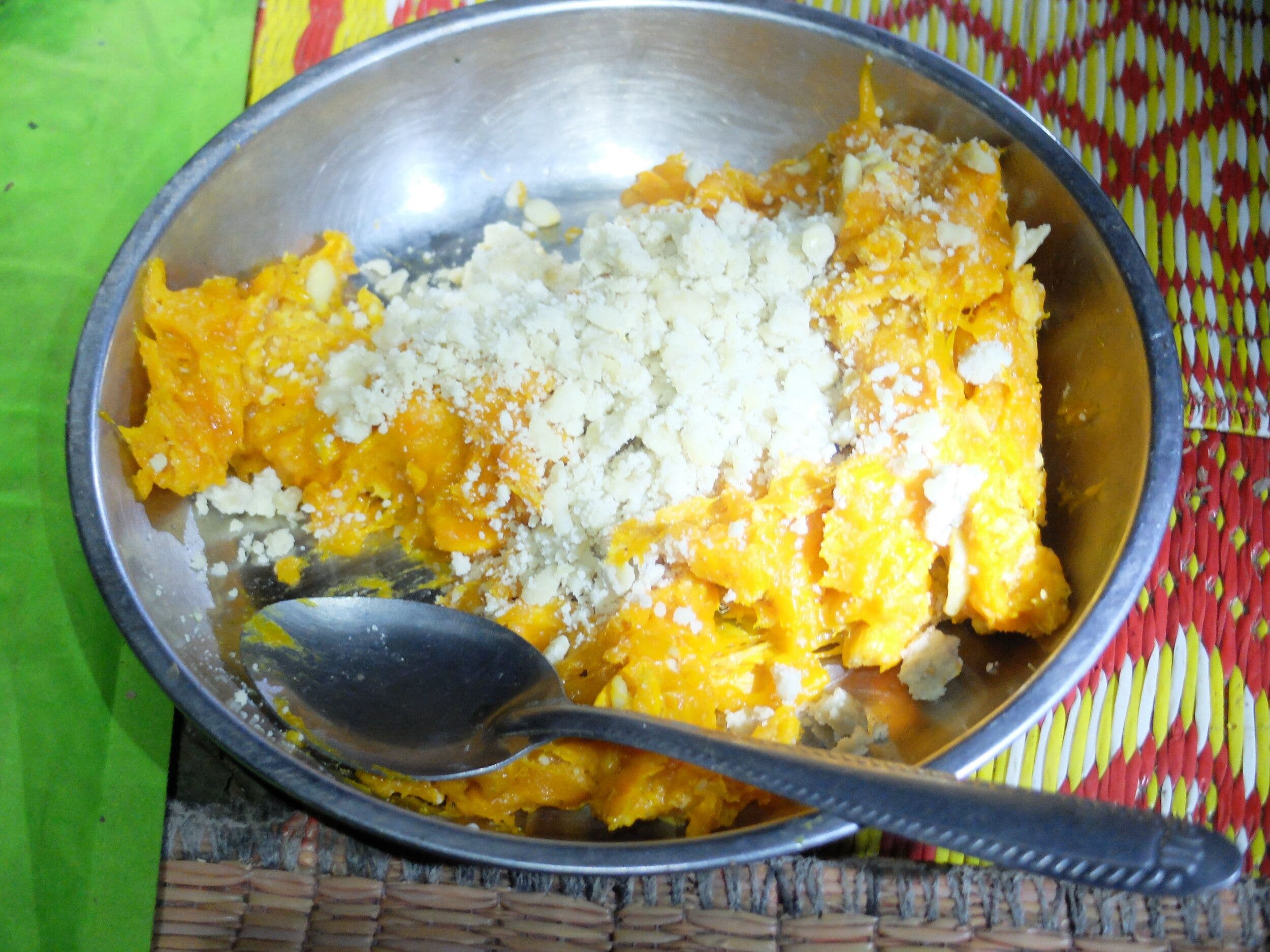
It is thus difficult to talk in general terms about what, or who, 'plants' are as a category. Each exists in particular relation to its different constituent parts (leaf, shoot, branch, etc.), and its different uses to humans (hair decoration, food, etc.) Different kinds of plants have different kinds of individual concerns, different impacts on each other, and different impacts in turn on other kinds of person.
Human and plant bodies
Just as the _mahũŋ-_smelling leaves evoked haʔip in Gubar, Batek people often express haʔip in response to seeing and smelling certain plants. During flower season, when coming across the bright sight of cɔm ʔɔs (lit. 'burn fire') flowers cutting through the greenery with Naʔ Badək and Naʔ Srimjam, they called out in joy: 'Ah! My flowers!' 'So red!' 'So beautiful', 'I haʔip'.
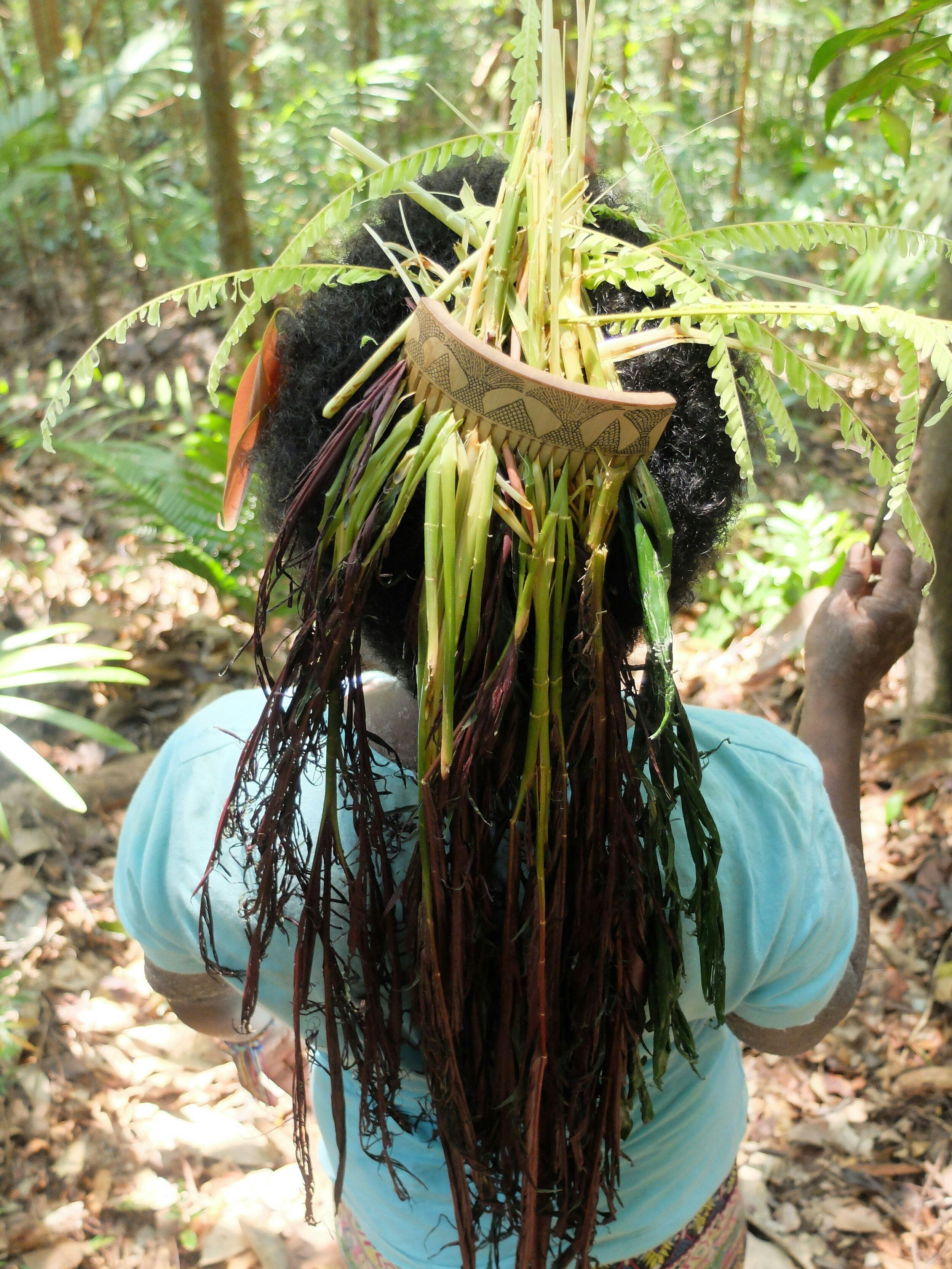
But it is important to be cautious around plants. Some properties of plants can affect the human body in profound ways: eating conjoined fruits can result in women giving birth to conjoined twins, and preparing pandanus to be woven the wrong way around can cause a breech birth. Rambutan (Nephelium lappaceum) fruits, with their characteristic leathery, hairy outer skins, can catch in the throat causing nasty coughs (even though the skins aren't eaten). In turn, fruits can be affected by the sensory experiences that they have of humans—if many people die in one year, the fruit season may be poor as the season itself doesn't like the lingering smell of death.
Even very common human actions can influence plants. If you pick certain kinds of flowers to wear in your hair, or fragrant leaves to decorate your comb and body with, you should not simply throw the flowers on the floor after you have finished with them—this would risk negatively affecting the fruit season. You should tuck them safely into the thatch of your house, which has the added bonus that you can continue to enjoy the smell for days. Fruits, too, have specific taboos surrounding them. With some fruits, uttering mocking wordplay on their names may cause instant death to the utterer.
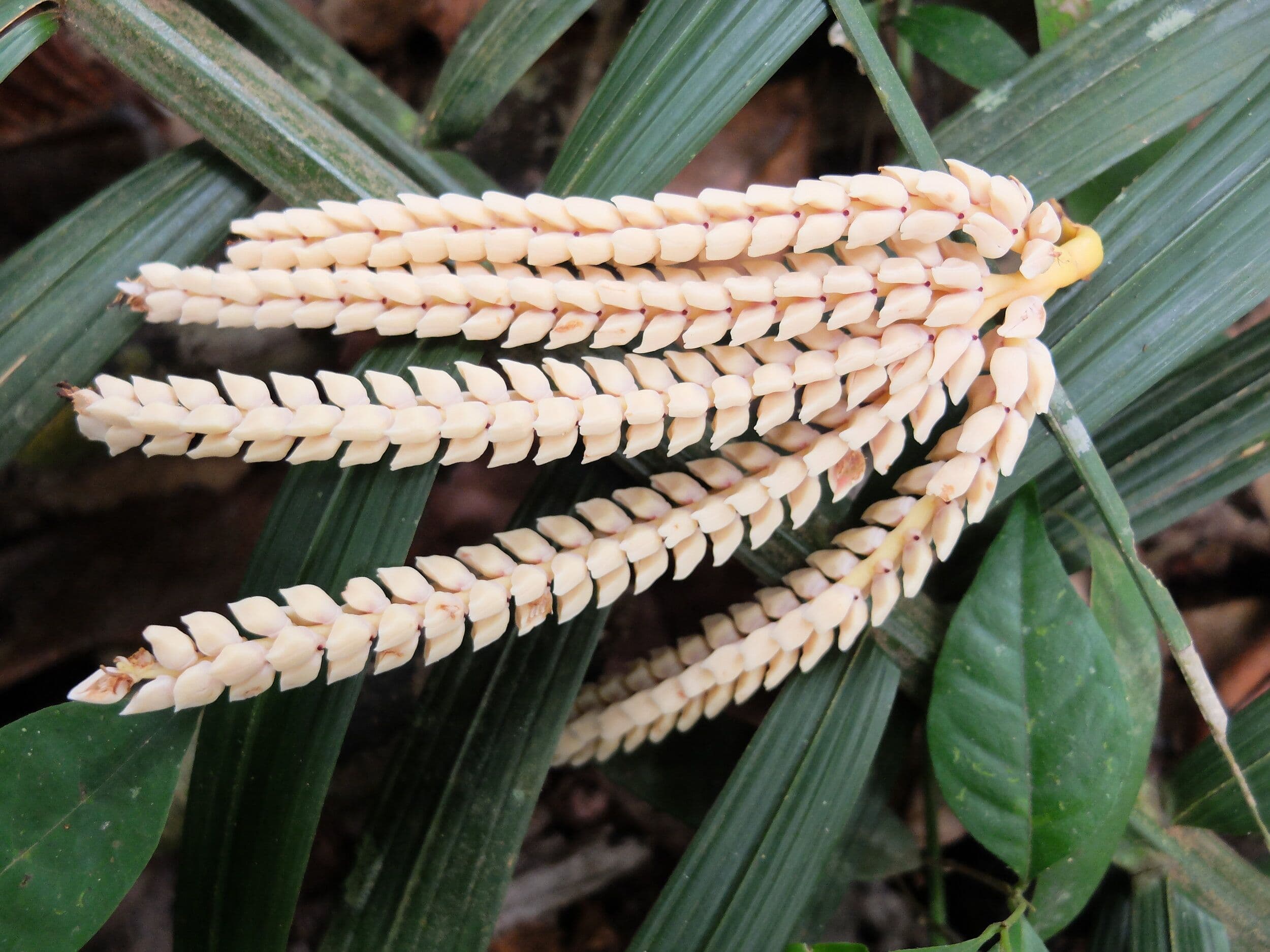
Particular tubers are also sensitive to name utterance, such as the tampaʔ (Gnetum tenuifolium),which can be nauseating if too many are eaten. Instead of uttering its name when digging or eating it, one could avoid doing so by instead uttering the avoidance name cway. The same goes for the tahɔŋ tuber ('a type of Dioscorea'), which can more safely be referred to as how.
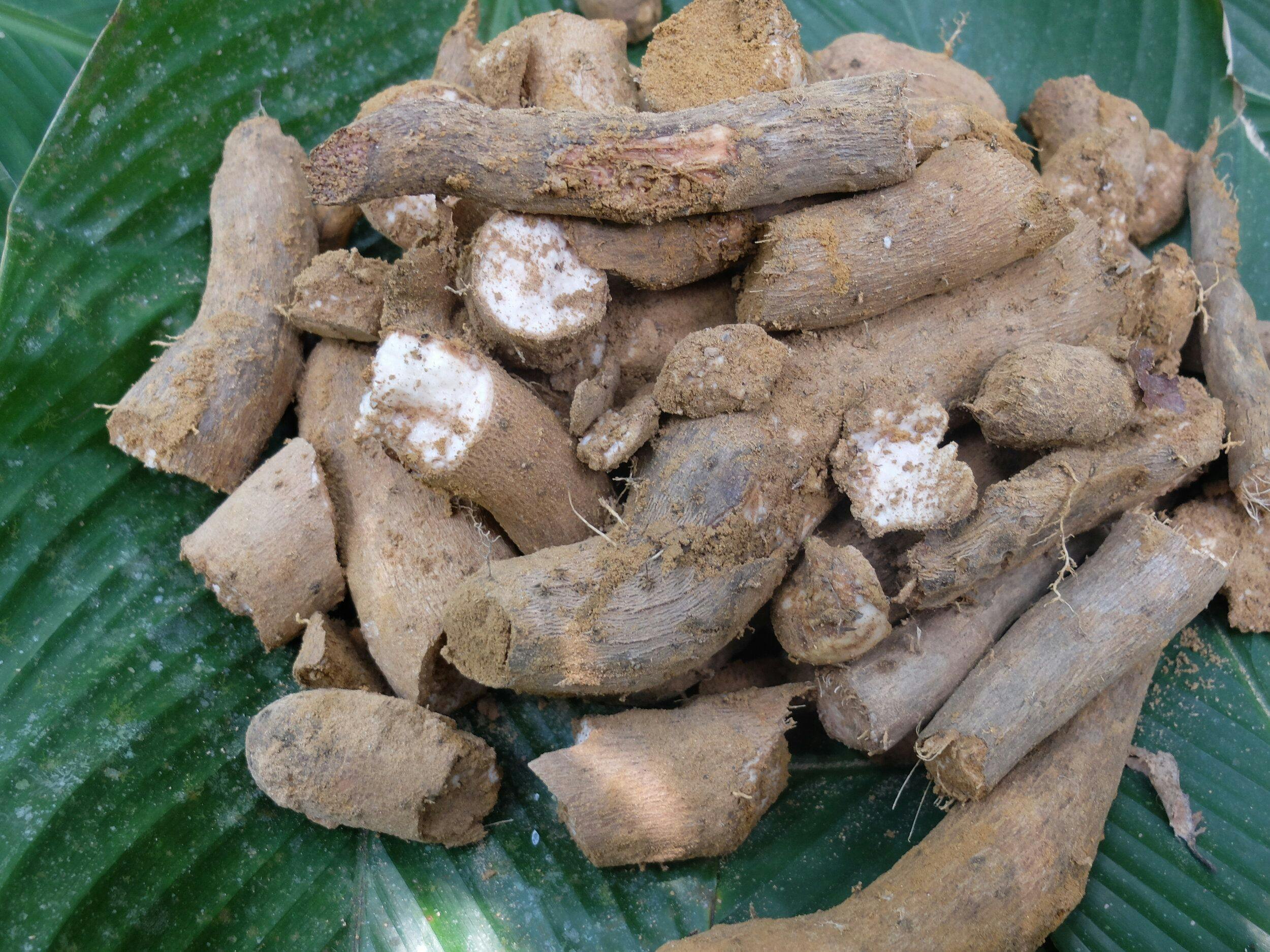
Plants of different types can thus be sensitive to human touch, to the intentions they perceive in human actions, and to hearing their own names, in diverse ways. In turn, humans must carefully navigate the sensory preferences of the plants they encounter, use, and consume, in order that they themselves remain healthy.
Weaving pandanus
One plant that is particularly salient in everyday life is pandanus (hakɛʔ). Variously termed 'screw pine' or 'screw palm', this is a palm-like plant, of which many different types grow in the Batek's forest. It is used for weaving everyday items such as sleeping mats, or storage containers. Though people often buy these things from the nearby market, the woven items have special significance.

As one weaves, the smell of the pandanus is impossible to ignore—the _mahũŋ-_ness would often prompt Naʔ Ktlət to exclaim that she felt haʔip for this smell, as she stayed up late into the night, making the tɔs tɔs tɔs tapping sound of thumb against pandanus, deftly weaving the strands together while her children slept.
But the act of weaving has significance beyond personal haʔip. It is also pleasing to the fruit season, and positively influences the fruit crop.

Unfortunately, however, the acts of cutting pandanus and weaving it are not necessarily pleasing to other kinds of beings, precisely because they cause the very mahũŋ smell that caused Naʔ Ktlət to feel haʔip. Though the mahũŋ smell of burning the fragrant leaves can appease Gubar when he is angry—which it did in that case with Naʔ Srimjam after our fishing trip—this smell can actually be offensive to other kinds of person in the Batek's forest. The rimɛn cicada really doesn't like this smell, and so cutting pandanus at the same time as you hear this cicada calling causes this insect to vanish. The absence of this insect, which plays an important role in the ecology of the fruit season, could mean that no fruits appear that year (despite the positive influence of weaving!).
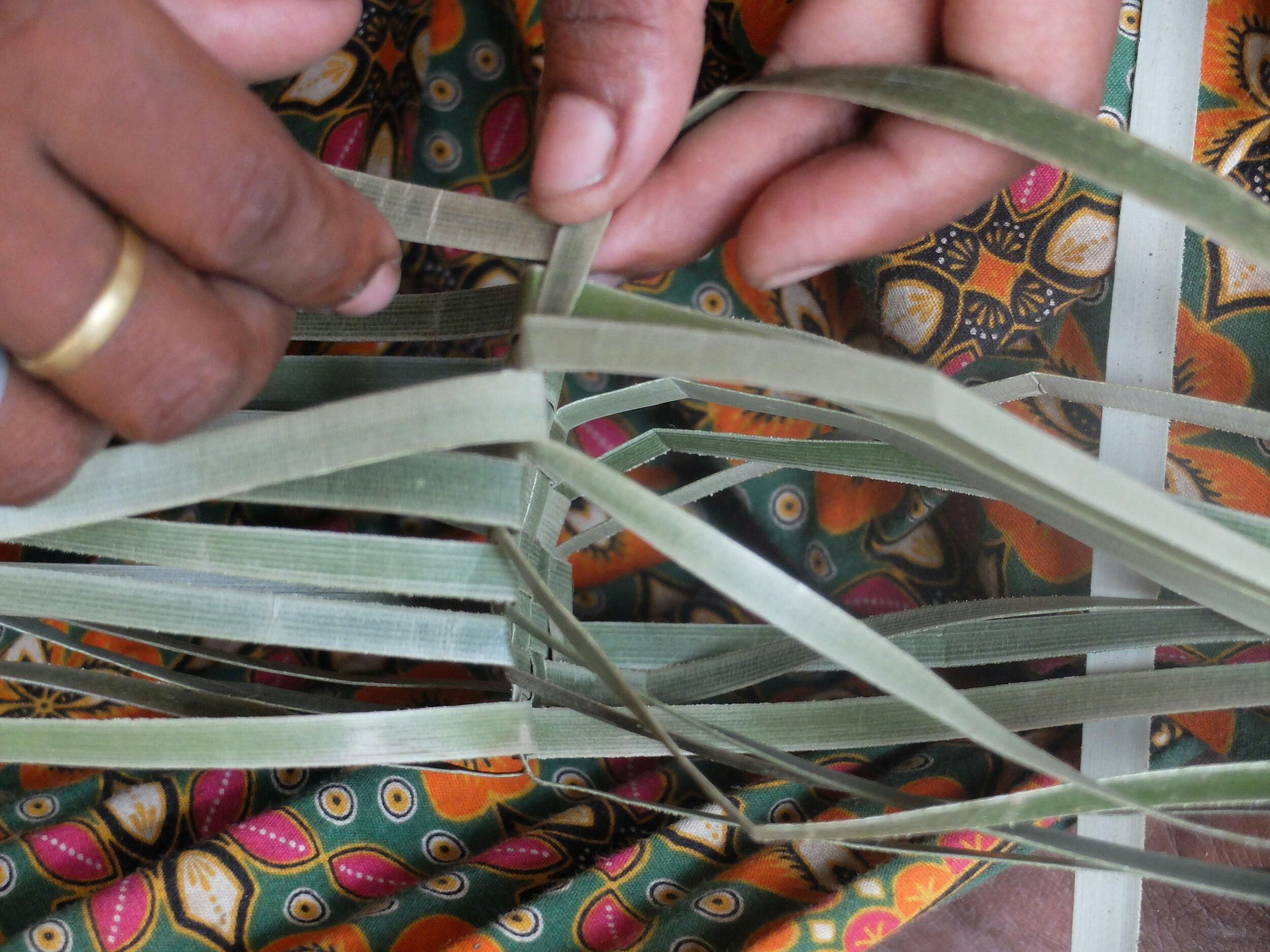
Living together yet differently
Sensory experiences can thus be interpreted very differently by different kinds of person. So while one might see inter-specific sensory communication in the forest as a form of 'becoming with', or 'making kin' with other species (Haraway 2008; 2016), it is worth interrogating what it means to be with a little more closely
Part of what 'becoming with' entails is a recognition that you simply cannot always ensure 'coordination' (Gan and Tsing 2018) amongst beings to ensure that relationships 'hold' together. Sometimes, entities are so different as to have entirely different interpretations of the same laugh, name utterance, or smell, and to be affected by these events in different ways.
Recognising this difference is important—it represents a stark contrast to the neighbouring, regimented oil palm plantations on which Batek people increasingly seek work as labourers. Unlike the forest ecology, the mono-cropped plantation necessitates that anything that is not a future asset must be killed off (Tsing 2017: 52). It ensures homogeneity—an absence of allowed difference.
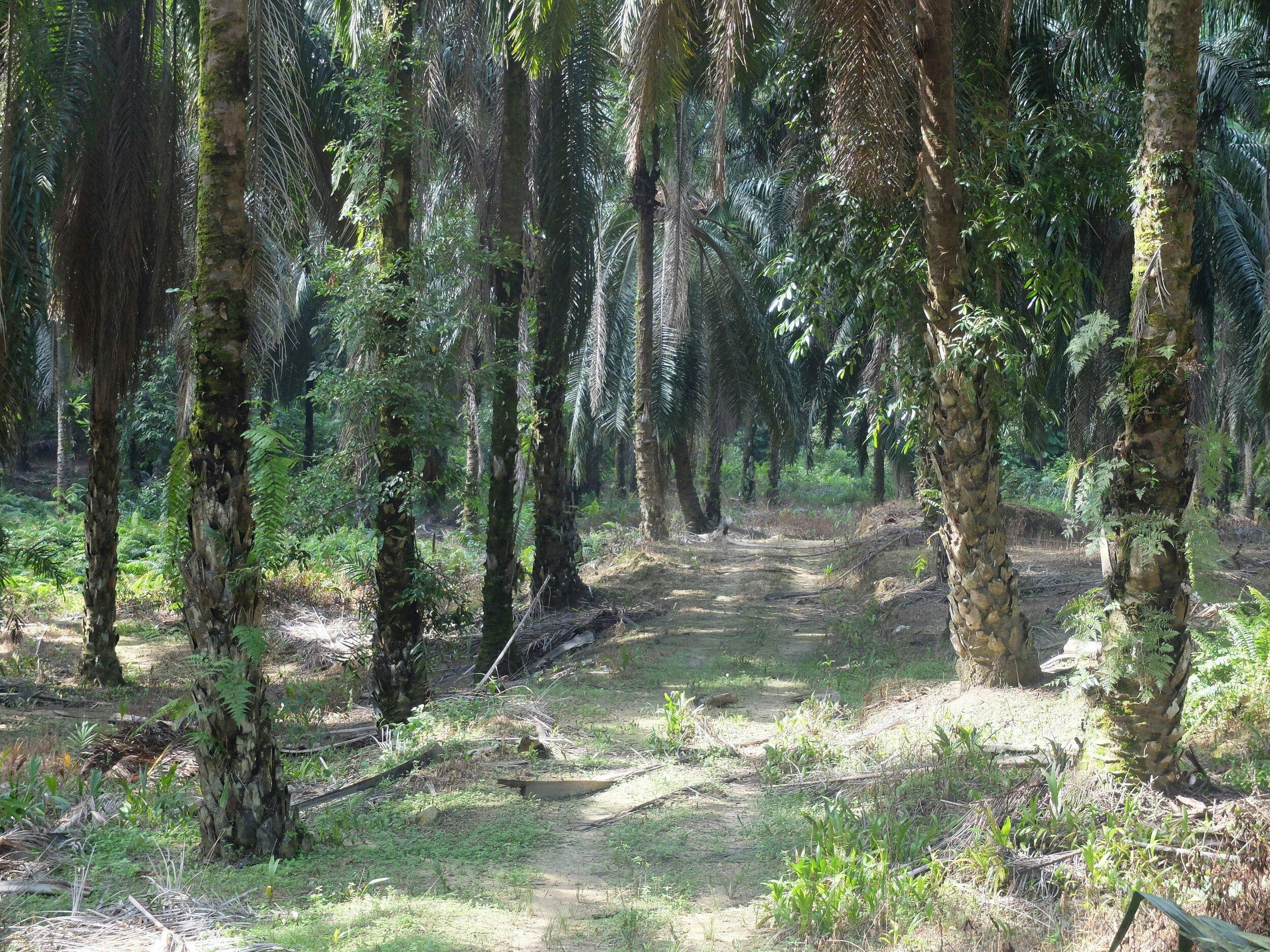
Rather than there existing a simplistic inter-specific harmony within the Batek’s forest, there is room for difference and ambiguity. Difference may cause offence, anger, and danger—but this, perhaps, is part of what it means to dwell ‘with’.
References
Gan, E. and Tsing, A. 2018. How Things Hold. Social Analysis 62(4):102–145. Haraway, D. 2008. When Species Meet. London: University of Minnesota Press. Haraway, D. 2016. Staying with the Trouble: Making Kin in the Chthulucene. Durham, NC: Duke University Press. Majid, A. and Burenhult, N. 2014 Odors Are Expressible in Language, as Long as You Speak the Right Language. Cognition 130(2):266–70. Tsing, A. L. 2017. A Threat to Holocene Resurgence Is a Threat to Livability. In Marc Brightman and Jerome Lewis (eds.) The Anthropology of Sustainability: Beyond Development and Progress. New York: Palgrave Macmillan. Wnuk, E. and Majid, A. 2014. Revisiting the Limits of Language: The Odor Lexicon of Maniq. Cognition 131(1):125--38.
